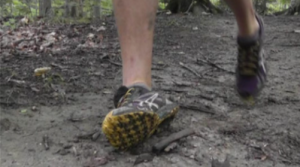Ankle Sprain/Instability
Ankle Sprain/Instability
An ankle sprain is an injury to one or more ligaments in the ankle, usually on the outside of the ankle. Ligaments are bands of tissue – like rubber bands – that connect one bone to another and bind the joints together. In the ankle joint, ligaments provide stability by limiting excessive movement.
The ankle sprain is the most common athletic injury. Almost 85% of ankle sprains occur (laterally) on the lateral or outside part of the ankle. Ankle sprains are commonly graded into 3 grades;
- Grade I mild: slight stretching an some damage to fibers of the ligament.
- Grade II moderate: partial tearing of the ligament. Swelling ,bruising and joint instability present.
- Grade III severe: complete tear/rupture of the ligament. Severe swelling, bruising and Inability to weight bear without severe pain.
Symptoms
Symptoms of ankle sprains
- Ankle pain – mild to severe.
- Swelling and bruising.
- Difficulty walking or putting weight on the ankle.
- Inability to move the ankle.
- Weakness and instability in the ankle.
Risk factors for ankle sprains
- History (previous) of ankle sprains
- Walking, running or playing on uneven surfaces
- Hypermobility, supinated (high arch) foot type
- Wearing shoes that don’t fit well or don’t have good support
- Playing sports that require a sudden change in direction – jumping and landing awkwardly from a jump or side step (football, soccer, basketball)
- Muscle weakness, poor proprioception and poor previous ankle rehabilitation
Diagnosis
Evaluating ankle injuries, the podiatrist will obtain a comprehensive history of symptoms and examine the foot/ankle. Diagnostic imaging including an X-ray and Ultrasound may be prescribed by the podiatrist to review the extent of the damage to the ankle ligaments. In severe cases, an MRI may be needed to rule out other problems in the ankle such as damage to the articular joint cartilage.
An early assessment and accurate diagnosis is critical to;
- Avoid an chronic ankle instability – leading to repeated ankle sprains.
- Early rehabilitation – if delayed it can lead to poor healing and a chance of reinjuring the ankle joint.
Treatment
Early treatment of ankle sprains is essential to develop an affective treatment program. At Sydney Foot Clinic the treatment options offered include;
- Rest and Ice – 20 min every two to three hours advised in the first 48-72 hours of the injury taking place
- Keeping off the foot and reducing activity prevents further injury
- Non-steroidal anti-inflammatory medication – help reduce the pain and inflammation
- Exercise program – rehabilitation and strengthening of the ankle to prevent ankle instability, ensure return of range of motion and prevent re-injury
- Custom made orthotic therapy – orthotics may be prescribed to address any biomechanical for risk factors that may lead to recurrence of injury
- Surgery is not required in the vast majority of ankle sprain injuries


